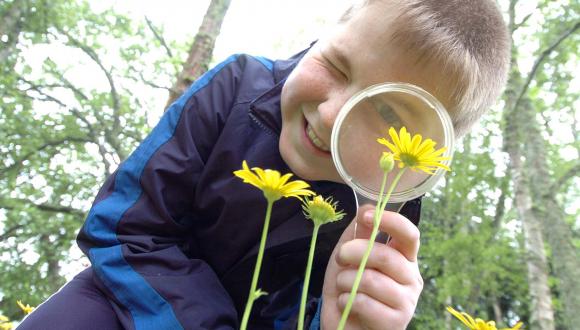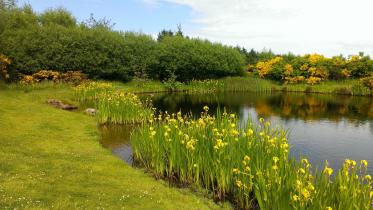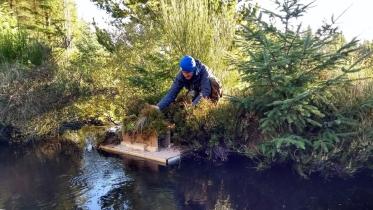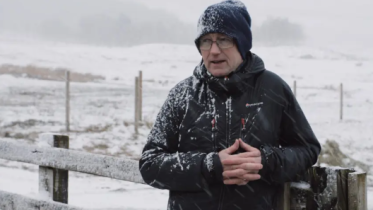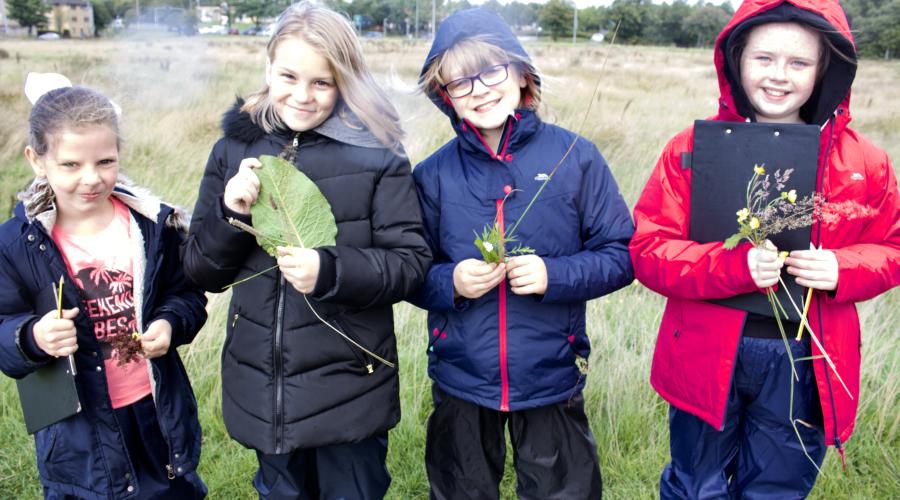
Learning in Local Greenspace with Linnvale Primary School - a case study
Why learn in local greenspace
Like all schools taking part in the Learning in Local Greenspace project, Linnvale serves one of Scotland’s most disadvantaged communities and, like most, is located in a very urban area. Their school grounds have been developed to include a small wooded area, a willow tunnel and a log circle and these are used on a daily basis by the nursery and school. This has led to overcrowding at times and it isn’t feasible to have two classes out at once so the school was keen to explore the potential of the local area through the Learning in Local Greenspace project.
“I have enjoyed taking groups for Forest School and wanted other children to have a project to work towards too so thought that taking part in this might motivate me to make sure that they would get regular visits to greenspace”
Finding your local greenspace
Class teacher, Carol Guthrie, doesn’t live near the school so she took a walk with NatureScot and West Dunbartonshire Environment Trust to explore greenspaces within walking distance and discovered a place with great potential just a stone’s throw away. The area, between busy Great Western Road and the Forth and Clyde Canal, and under the Glasgow Airport flight path, is only a few minutes’ walk from the school down quiet residential streets. It is used by walkers and has a variety of grassy and boggy areas with mown grass paths.
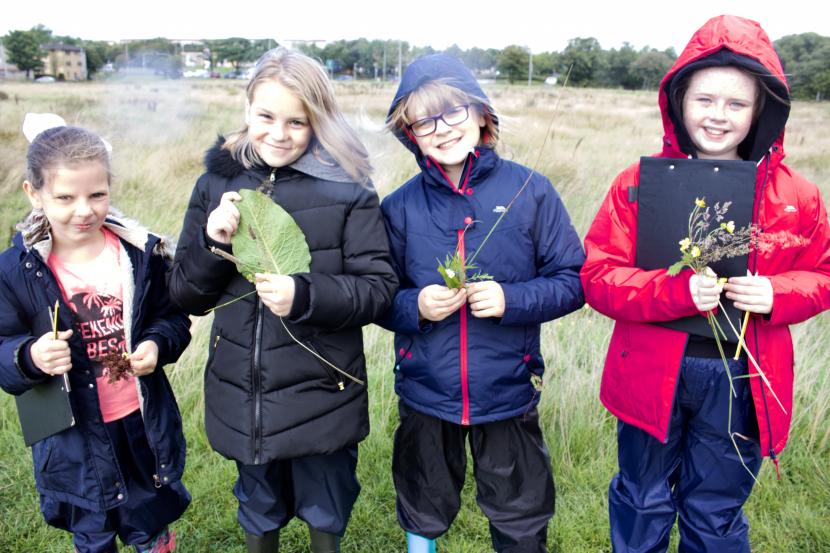
Accessing your local greenspace
Carol was disappointed to hear from The Environment Trust that the area was earmarked for housing. This was a real set back but, after discussion with the Trust, she decided to go ahead anyway. With uncertainty around the timescale for the development, many pupils could still benefit in the meantime and perhaps even influence the plans. The Trust also highlighted who to speak to find out more about the development and gain permission for any changes.
Using your local greenspace
This academic year, Carol was timetabled for Outdoor Learning 4 days per week, which really helped their Learning in Local Greenspace project to kick off. The headteacher requested a Probationer to enable this and, although Carol can sometimes be pulled in to cover a class if a staff member is off sick, by and large, these days are dedicated to learning outdoors across the curriculum, including via John Muir Award and Forest School sessions.
Through the sessions in their greenspace, Carol has seen the pupils develop a sense of ownership and pride in their area, and a greater understanding of why natural spaces are important and the impact that litter can have. They are beginning to take a greater interest in the flora and fauna and have learned about the history of the canal. Carol has a ‘scribble wall’ in class where pupils have reported improvements in their health and wellbeing, and better relationships have been formed with pupils who can demonstrate challenging behaviour at times.
"I don’t feel as stressed when I’m out but when I am in class I get stressed.”
Ryan, P7"I feel calm, free and not enclosed”
Hannah, P6
The group also accessed a travel grant to enable them to visit Loch Lomond and The Trossachs National Park, allowing pupils to experience a progression of outdoor learning from their school grounds to their local area and further afield.
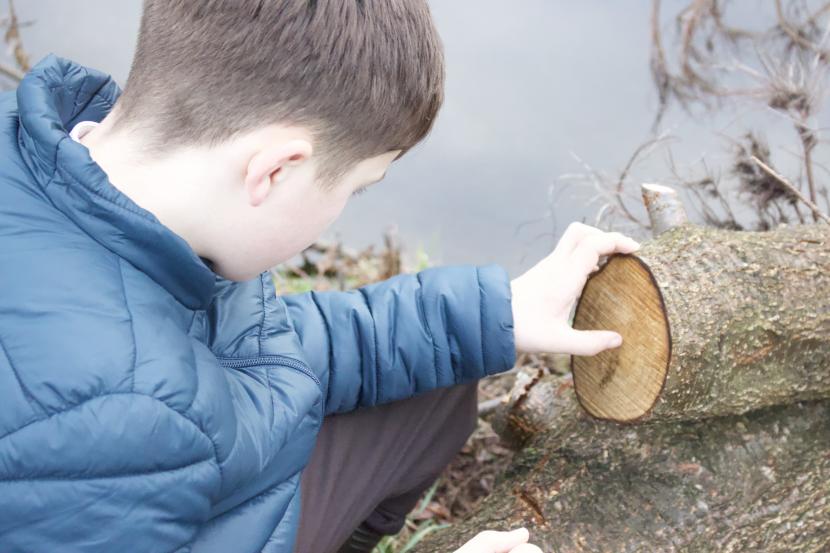
Improving your local greenspace
No immediate improvements were required for access or safety so groups decided to use the site for a while before considering any changes. They do regular litter picks, with one group collecting over 10kg of litter and another nearly 1000 individual items from the route they take to and from school! The Community Council has noticed them using the space and invited pupil representatives to come and give their views about what can be improved in the local area.
Spreading & embedding learning in local greenspace
Pupils held an Open Afternoon at their greenspace to share their experiences with family, friends and partners, offering activities similar to those they have been doing. The Depute Head Teacher joined them and has seen first hand the enthusiasm of the pupils and the benefits these sessions bring. Feedback from parents has been very positive, with some stating that these visits are the thing their child talks about most after school.
"I feel I belong in nature”
Tiegan, P6Two Learning Assistants are completing their John Muir Award alongside the pupils and have learned to make helpful observations on how pupils have responded to being outside compared to being in school. Carol plans to involve more teaching staff next session, perhaps by collaborating on a term-long project in the greenspace.
"This year there has been an outdoor maths focus within our school grounds but it would be wonderful to take more pupils further afield to our natural space to do activities there”
Carol’s plans for the future
Carol’s advice to others is to start small; aim for an hour a week and you will be surprised at how quickly this increases. Don’t just go for Numeracy, Literacy or Science; try Expressive Arts or Health and Wellbeing in your greenspace, or take learning through play outdoors. Do nature walks and gradually extend the distance you go. Drum up parental support. Get the local community involved.
Share. As well as sharing what you and your pupils are doing, sharing articles from the press, social media and journals can all help raise the profile of Outdoor Learning and its benefits with senior managers and colleagues. Why not try a whole school Outdoor Learning day, with all staff playing a role in planning and delivery?
It can be challenging to ensure pupils come prepared for learning in their greenspace wearing the appropriate clothing. Linnvale accessed the Learning in Local Greenspace Seed Fund to buy waterproofs and wellies but found that many pupils were still ill-equipped, wearing thin ankle socks and t-shirts. Try creating a 'Borrow Box' of hoodies and socks, asking parents to donate outgrown wellies and clothing.
All photos taken by Carol Guthrie, Linnvale Primary School, West Dunbartonshire.
Published: 2020
